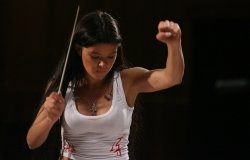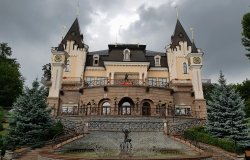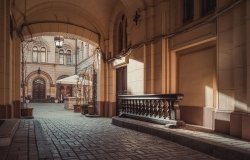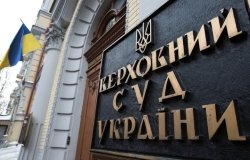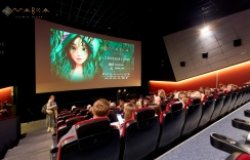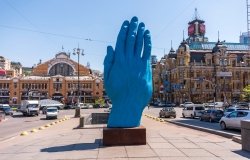
A blog of the Kennan Institute
The Healing Potential of Community Theater as Seen in Ukraine’s Lutsk
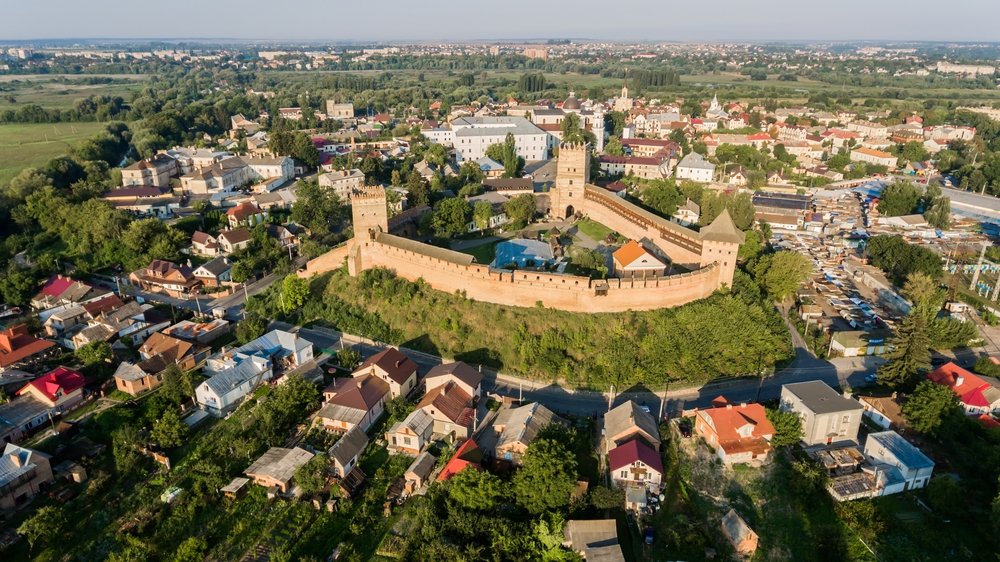
Ronedya/Shutterstock.com
BY BLAIR A. RUBLE
An unremarkable, long, cylindrical metal hangar—what Americans call a “Quonset hut”— stands in a tattered industrial yard near rail lines in the western Ukrainian city of Lutsk. The forlorn temporary building has become the site of much coming and going since the Russians invaded Ukraine on February 24.
About 60 miles (100 km) from the Polish border and twice that from the Belarusian one, the hangar is well positioned to support recruits and store supplies gathered to be shipped off. The hangar stands on hallowed ground, in a rail yard once used by both the Nazis and the Soviets to gather those dispatched to death camps in the west and the GULAG to the east. Today, the building rectifies this dark past by serving as a hub for Ukrainians volunteering to defend their country.
These logistical advantages are also why its proprietor—the experimental GaRmYdEr (Garmyder) theater—has found the hangar so agreeable. Ruslana and Pavlo Porytski established their company two decades ago to create a theater which embraces a little of this, and a little of that to speak to the surrounding community. The name “Garmyder” tells the story, meaning “mess, clutter, lots of different things, space without order.” The hangar became home base for their artistry several years ago.
Before February 2022, surrounded by textile and candy factories, the building seemed a sweetly benign gathering spot for theatergoers, children attending their first performances, rock bands, and international touring groups. Such peacetime activities exemplify the reasons why so many Ukrainians believe that this war is worth fighting.
The Porytskis created the Garmyder Theater in 2003, while students at Lutsk’s Volyn State University. A student of cultural studies, Ruslana researched the role of theater in education and community building. Pavlo, an art student and aspiring actor, approached the power of theater from the stage. They found common ground studying Lesya Ukrainka’s poetic play Forest Song and joined forces to establish an experimental company that would meld classical performance with contemporary multimedia tools such as 3D visualizations.
The Garmyder promoted physicality in theater, an approach that remains uncommon in Ukraine. The company’s explorations did not end there. The Porytskis wanted to blow apart traditional theatrical forms and spaces. In 2017, their Princely Banquet brought together visiting choruses from Lviv and an equestrian theater troupe to celebrate Prince Vytautas, his retinue, knights, traditional dance, and songs. Later, they honored the late poet Kost Shyshko, who was executed by the Soviet regime, by staging readings of his works at an unfinished high-rise building. On each floor, including the roof, there were immersive events based on his poems and his life.
Starting out on small chamber stages at the university, and moving to a local House of Culture , the Porytskis attracted enthusiastic collaborators. By 2022, the troupe had grown into a self-managing company of some 50 actors, directors, editors, camera operators, administrators, and writers. The group became a cherished community resource, expanding its activities to include a vibrant children’s training program at the theater studio-workshop, the Dogory Drygom, and performance schedule. The humble hangar, which can seat 120 people for theater and up to 230 for concerts, is a flexible and open space that can be reconfigured easily to serve the company’s multiple purposes. The hangar, in effect, has become a partner in these various ventures.
Garmyder artists also take their performances into the community and travel to festivals abroad. Performing on streets, in unfinished buildings, and at historic sites, they have promoted theater to revitalize Lutsk as an open and tolerant community. At times, they have joined forces with progressive theaters from Kharkiv, thus bringing east and west Ukraine together through artistic expression. Group discussions often follow Garmyder shows. The theater’s active community outreach has helped nurture a shared sense of belonging in a city that has suffered from a long history of exclusion and conflict.
Contemporary Lutsk is home to nearly a quarter of a million inhabitants. The city has existed since at least the 11th century on the volatile borderlands fought over by Rusians (rusychi), Poles, Lithuanians, Tatars, Russians, Austrians, Germans, and Soviets. By the mid-1930s, nearly half of its 39,000 inhabitants were Jews, with a sizable Polish population. Virtually none of these pre-war residents survived, with as many as 25,000 Jews being shot at close range on nearby Górka Połonka hill.
The city’s troubled history and modest size encouraged the Porytskis and their colleagues to mobilize the arts to support community building. Volyn State University was founded as a teachers’ college in 1940. The school attained university status following Ukrainian independence, and has been elevated to the rank of a national university. Its growing presence in the city—as exemplified by the Portytskis—cultivates a broader arts community.
In 2014, at the outset of the war in Ukraine’s east, the Porytskis responded by using their organization to investigate the role of theater in times of war. They have continued doing that all this years, even as war has flared up on a new scale this year.
Ruslana says, “when the full-scale war began, I asked myself: ‘Has our theater done enough to understand social processes, talk about the threat...?’ We often talked about these topics from the stage, but when this collapse happened on February 24, it seemed to me that we did not do enough, that we were not decisive and categorical enough in our statements. How should the theater change now? How should it talk about the war so as not to injure? What else [is there] to talk about with the viewer? We are exploring a new way of interacting with the public. Anyhow, one thing is obvious. We cannot simply resume the repertoire after a break and pretend that nothing happened.”
The Russian invasion earlier this year accelerated Garmyder’s plans for further community engagement. In addition to supporting the current war effort, the Porytskis and their colleagues have already started planning for a post-war Ukraine. Their company is contemplating how the various lessons learned from building community can provide art therapy for those who return from combat. However this future unfolds, the activist community theater developed by the Garmyder company will be fundamental to Lutsk’s success moving forward.
The opinions expressed in this article are those solely of the author and do not reflect the views of the Kennan Institute.
About the Author

Blair A. Ruble
Former Wilson Center Vice President for Programs (2014-2017); Director of the Comparative Urban Studies Program/Urban Sustainability Laboratory (1992-2017); Director of the Kennan Institute for Advanced Russian Studies (1989-2012) and Director of the Program on Global Sustainability and Resilience (2012-2014)

Kennan Institute
The Kennan Institute is the premier US center for advanced research on Eurasia and the oldest and largest regional program at the Woodrow Wilson International Center for Scholars. The Kennan Institute is committed to improving American understanding of Russia, Ukraine, Central Asia, the South Caucasus, and the surrounding region though research and exchange. Read more


